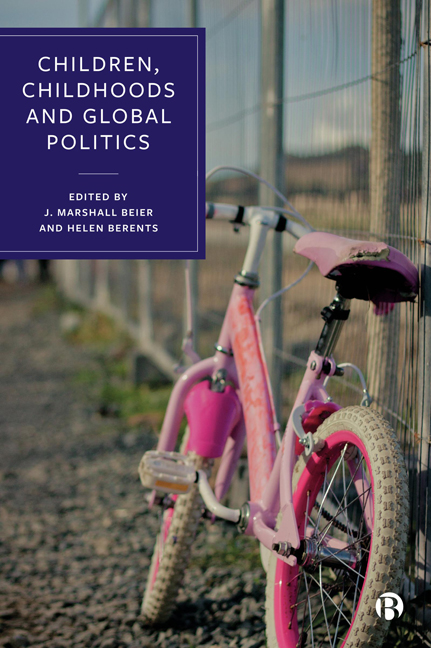13 - Children’s Intifada: Children as Participants in a Violent Conflict
Published online by Cambridge University Press: 03 April 2024
Summary
Introduction
On 23 November 2015, Wajih Awad, a 14-year-old from the Qalandiya refugee camp and her 16-year-old cousin Norhin Awad, entered West Jerusalem Mahane Yehuda market armed with scissors, with the intent to stab Israeli civilians. Wajih lightly wounded an elderly man and attempted to stab another civilian before the girls were both shot by an Israeli security officer. Wajih Awad was killed after being knocked on the ground by a passerby and then shot at point blank range by a security officer. Her cousin recovered from two bullet wounds in her stomach and is serving a 13-year prison sentence in Israel. Wajih, the 14-year-old ‘terrorist’, was apparently seeking revenge for the death of her brother, who was killed by Israeli soldiers after being shot at close range with a rubber bullet to the neck while protesting at a checkpoint. Her 16-year-old cousin claimed that she was accompanying her and did not intend to hurt anyone. Armed with scissors, these girls did not pose a serious threat; only the one man was slightly injured. However, within Israel, the shooting of the girls was considered fully justifiable. The attack by the teens was not an isolated case but was rather one of hundreds of incidents involving Palestinian youth seeking revenge against Israeli civilians subsequent to the 2014 Gaza war and ongoing realities of life under the military occupation. Because so many of the incidents were perpetuated by Palestinian youth lightly armed with scissors, screwdrivers, or knives, the wave of violence during 2015–2016 has often been referred to as the ‘knife’ or the ‘children’s intifada’.
Within an internal violent conflict where civilians are not far removed from combatants, children may engage as activists or perpetrators of violent acts, and they can volunteer or be coerced into conducting suicide missions. Although there is much literature on children’s vulnerability regarding the effects of war and exploitation (Slone and Mann, 2016; Wessells, 2019), there is far less research into children as perpetrators of violence. Most of the research on children as violent perpetrators has focused on child soldiers abducted and trained by armed groups. Recent research has noted that modern armed conflict has increased the use of child soldiers (Nyamutata, 2020). Violent groups have practical reasons for targeting children for terrorist activities, which include attaining cheap soldiers and increasing the longevity of the groups.
- Type
- Chapter
- Information
- Children, Childhoods, and Global Politics , pp. 180 - 192Publisher: Bristol University PressPrint publication year: 2023



